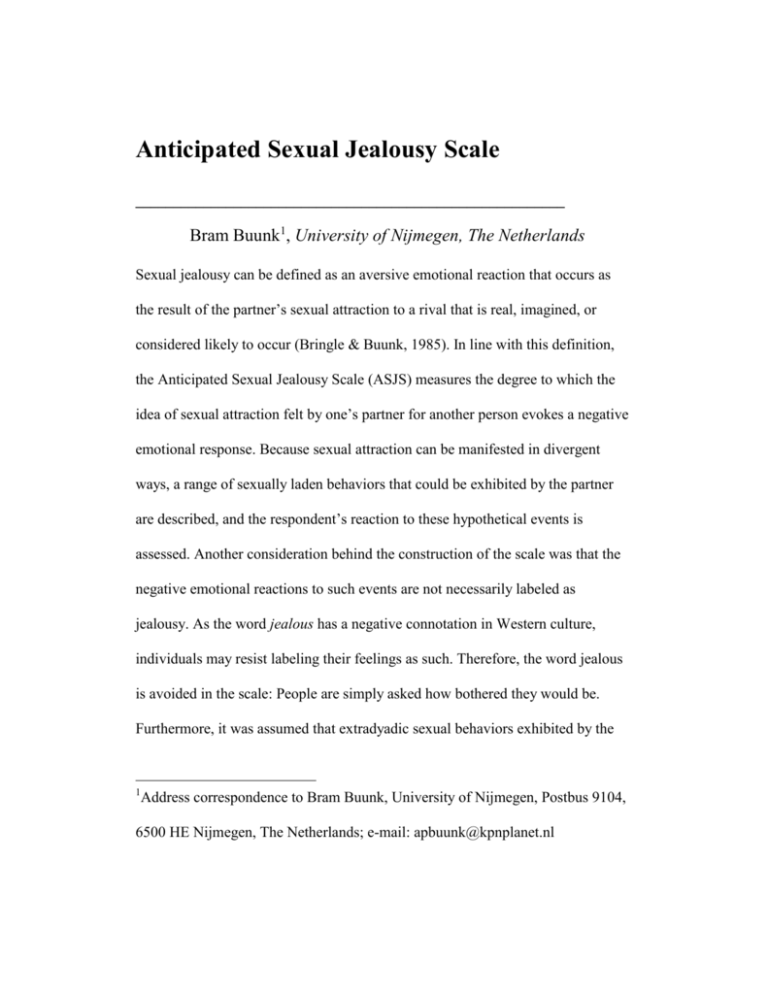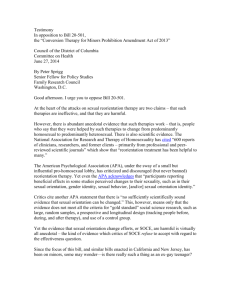
Anticipated Sexual Jealousy Scale
_________________________________________________________
Bram Buunk1, University of Nijmegen, The Netherlands
Sexual jealousy can be defined as an aversive emotional reaction that occurs as
the result of the partner’s sexual attraction to a rival that is real, imagined, or
considered likely to occur (Bringle & Buunk, 1985). In line with this definition,
the Anticipated Sexual Jealousy Scale (ASJS) measures the degree to which the
idea of sexual attraction felt by one’s partner for another person evokes a negative
emotional response. Because sexual attraction can be manifested in divergent
ways, a range of sexually laden behaviors that could be exhibited by the partner
are described, and the respondent’s reaction to these hypothetical events is
assessed. Another consideration behind the construction of the scale was that the
negative emotional reactions to such events are not necessarily labeled as
jealousy. As the word jealous has a negative connotation in Western culture,
individuals may resist labeling their feelings as such. Therefore, the word jealous
is avoided in the scale: People are simply asked how bothered they would be.
Furthermore, it was assumed that extradyadic sexual behaviors exhibited by the
1
Address correspondence to Bram Buunk, University of Nijmegen, Postbus 9104,
6500 HE Nijmegen, The Netherlands; e-mail: apbuunk@kpnplanet.nl
partner can evoke negative, neutral, and positive emotional reactions (see Buunk,
1981a) and that this should be reflected in the response code.
Description, Response Mode, and Timing
The scale consists of five items. The format for each item is the same: The
respondents are asked how they would feel if their partner were to engage in
flirting, light petting, falling in love, sexual intercourse, and a long-term sexual
relationship with another person of the opposite sex. The nine response options
range from extremely bothered to extremely pleased. The midpoint is described as
neutral. Each of the possible answers is spelled out literally. The respondents
circle the number corresponding with the answer that best fits their anticipated
feelings. The scale usually requires no more than 1 or 2 minutes for completion.











